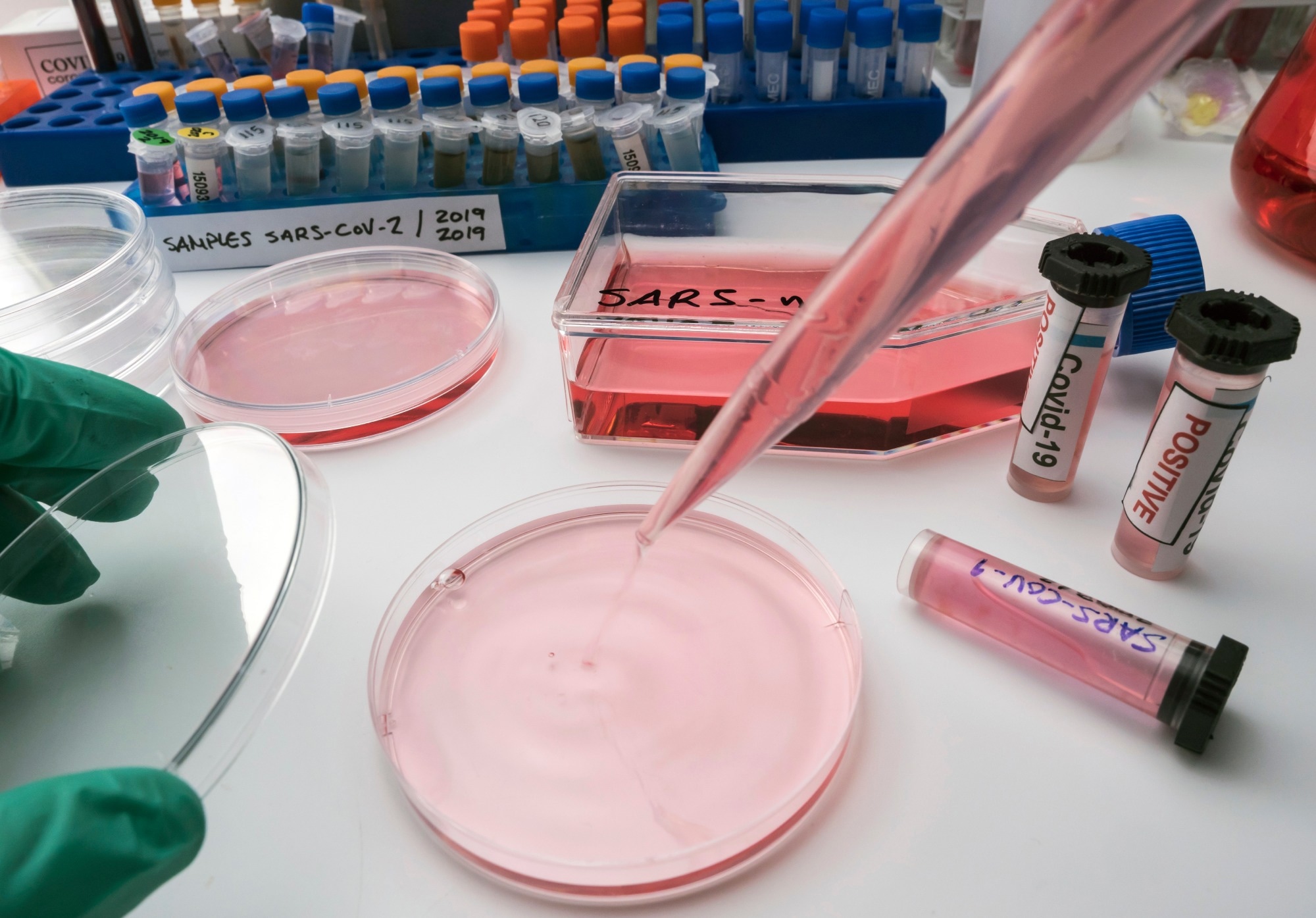In a recent study published in the journal Science, a group of researchers utilized antigenic cartography to study cross-reactivity patterns among severe acute respiratory syndrome coronavirus 2 (SARS-CoV-2) variants and evaluated the impact of key spike-protein substitutions on immune responses post-infection and vaccination.
 Study: Mapping SARS-CoV-2 antigenic relationships and serological responses. Image Credit: felipe caparros / Shutterstock
Study: Mapping SARS-CoV-2 antigenic relationships and serological responses. Image Credit: felipe caparros / Shutterstock
Background
Since the onset of the SARS-CoV-2 pandemic, diverse variants have emerged, with over 766 million cases and 6.9 million fatalities. The initial B.1 variant, characterized by the D614G mutation, did not escape serum neutralization. However, variants like Alpha, Beta, Gamma, Delta, and Omicron, dubbed "variants of concern" by the World Health Organization (WHO), have presented challenges to vaccine and treatment efficacy. As these antigenic variations have grown, they have complicated neutralization processes. Further research is essential due to the continuous emergence and circulation of diverse SARS-CoV-2 variants that present varying degrees of immune escape, complicating our understanding of antigenic relationships and necessitating the optimization of vaccine strategies for enhanced protection.
About the study
During clinical trials, all study samples were collected, including those from vaccine recipients. Convalescent sera, assumed to be from first infections, were sequenced for variant identification. All study sites had Institutional Review Board (IRB) approval, and participants gave informed consent.
Several post-vaccination samples stemmed from the mRNA-1273 phase 1 study and the Coronavirus Efficacy (COVE) phase 3 trial. Samples from the >3 months post 2× mRNA-1273 group were from individuals who received two initial shots and a booster. With no record of prior SARS-CoV-2 infection, these individuals contributed to the >3 months post 3× mRNA-1273 samples, which were part of a specific clinical trial. Meanwhile, samples taken 4 weeks post 2× mRNA-1273.351 originated from another clinical trial cohort.
Neutralization was gaged using a lentiviral pseudotyped virus assay. In evaluating titer levels, researchers identified deviations from expected patterns, applied specific criteria, and devised a method to estimate Geometric Mean Titers (GMT) accurately.
Antigenic cartography, using the Racmacs package, aimed to elucidate the antigenic evolution of pathogens. Validations confirmed that the two-dimensional (2D) map fairly represented variant relationships. Through cross-validation replicates, it was determined that the 2D map had a commendable predictive capacity, albeit not perfect. Constructing antibody landscapes, the methodology showcased reactivity's cone-like variation in the antigenic space, offering a unique visualization of the antigenic map.
Study results
Researchers analyzed 207 serum samples from vaccinated and infected individuals to understand neutralization patterns against 21 SARS-CoV-2 variants using a Food and Drug Administration (FDA)–approved method. The samples covered people infected with various virus variants and those vaccinated at diverse intervals. Unique neutralization profiles emerged, with Omicron variants particularly showing significant neutralization escape post multiple messenger ribonucleic acid (mRNA)-1273 vaccinations.
Analysis of the GMT from 183 serum samples showed distinct reactivity patterns. The B.1.351 and P.1 serum groups exhibited comparable neutralization profiles, hinting at analogous virus structures. Omicron variants, especially BA.4/BA.5, demonstrated varied neutralization outcomes, with some diminished efficiency even after a third mRNA-1273 dose.
Researchers visualized antigenic relationships in two-dimensional maps, however, the distinctiveness of BA.4/BA.5 required a three-dimensional representation, hinting at a unique antigenic space. This three-dimensional antibody landscape illuminated the varied serum reactivity across different SARS-CoV-2 strains. For instance, B.1.617.2 sera reacted more robustly against its corresponding variant.
Furthermore, post-vaccination landscapes of mRNA-1273 sera highlighted varying cross-reactivity dependent on vaccination timing. Reactivity breadth notably expanded post multiple mRNA-1273 doses, suggesting an evolving defense mechanism with repeated immunizations.
In detailed mapping, variants' positions connected to shared amino acid changes among pre-Omicron strains. For example, variants modified at position 484 appeared on the map's right due to reduced neutralization. Variants at the top, like B.1.1.7 and B.1.351, had a substitution at position 501. B.1.351 and P.1 had changes at position 417, and the lower half variants had substitutions at position 452. Omicron variants, with over 15 Receptor Binding Domain (RBD) changes, clustered distinctly.
To understand these antigenic shifts, 10 lentiviral pseudotypes with singular substitutions were created. Their antigenic effects typically matched the patterns on the wild-type variant map. Position 484 showcased pronounced antigenic shifts, while position 417 had nuanced changes. The sole N501Y alteration did not significantly adjust the antigenic map.
In-depth assessments revealed serum sensitivities when variants only differed at positions 484 or 501. For instance, BA.1 serum responses veered away from the 484 position. Sensitivities at position 501 are related to the specific amino acid in the infecting variant. K417N substitutions revealed unique serum reactivity patterns, possibly hinting at structural similarities. In contrast, most serum groups could discern variants differing only by the L452R change.
Lastly, the study examined the impact of alterations in the N-terminal domain (NTD). Generally, single amino acid shifts in the RBD were unaffected by concurrent NTD changes. However, mutants like B.1.351+N417K differed notably from other viruses with similar RBD structures.